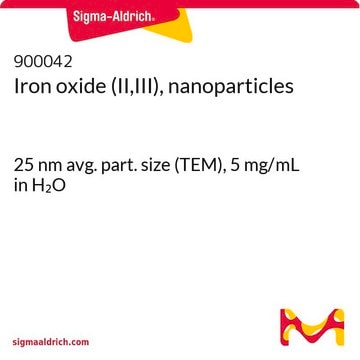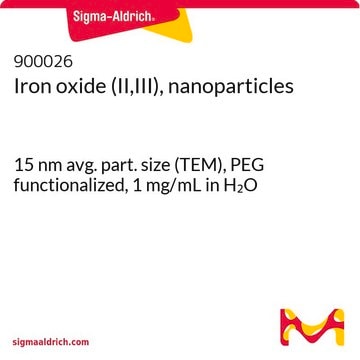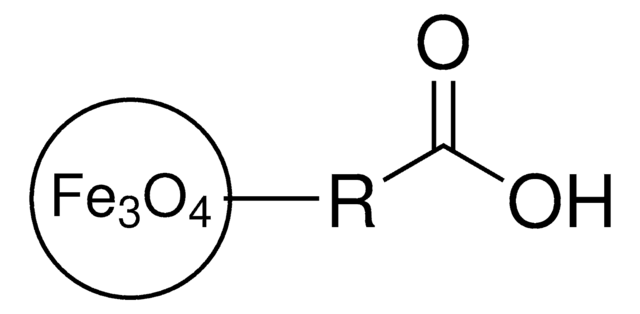900062
Iron oxide (II,III), nanoparticles
30 nm avg. part. size (TEM), 5 mg/mL in H2O
Synonym(s):
Nano Iron Oxide (II,III) Particles
About This Item
Recommended Products
form
dispersion
nanoparticles
Quality Level
concentration
5 mg/mL in H2O
avg. part. size
30 nm (TEM)
storage temp.
2-8°C
Looking for similar products? Visit Product Comparison Guide
Related Categories
Application
Legal Information
Storage Class Code
12 - Non Combustible Liquids
WGK
WGK 3
Flash Point(F)
Not applicable
Flash Point(C)
Not applicable
Certificates of Analysis (COA)
Search for Certificates of Analysis (COA) by entering the products Lot/Batch Number. Lot and Batch Numbers can be found on a product’s label following the words ‘Lot’ or ‘Batch’.
Already Own This Product?
Find documentation for the products that you have recently purchased in the Document Library.
Customers Also Viewed
Articles
Nanoparticle imaging agents enable stem cell tracking via various in vivo imaging techniques.
Professor Hui Mao explores the use of superparamagnetic iron oxide nanoparticles (INOPs) that offer an alternate contrast-enhancing mechanism.
Prof. Yadong Yin discusses various synthesis methods of magnetite nanocrystals and their applications in different fields.
Our team of scientists has experience in all areas of research including Life Science, Material Science, Chemical Synthesis, Chromatography, Analytical and many others.
Contact Technical Service





